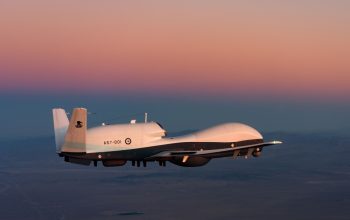A brief look at China Aerospace Science and Technology Corporation (CASC) M20 missile system, A100 MLRS, A200/A300 GMLRS and CX-1 supersonic cruise missile. To increase competition and innovation in China’s missile and aerospace sector, in 1999 the State Council divided the China Aerospace Corporation into the China Aerospace and Technology Corporation (CASC) and the China Aerospace and Industry Corporation (CASIC). CASC engages in the research, design, manufacture and launch of space systems, as well as long-range strategic ballistic missiles and their components. CASC also offers defense systems, such as such as vehicle air defense, ship-to-air missile, surface-to-air, and portable missile weapon systems, as well as unmanned aerial vehicles (UAVs), precision guided bombs, and guided multiple-launch rockets.

The M20 also named DF-12 is a short-range surface-to-surface tactical missile. The shift in designation from M-20 to DF-12 indicates the missile is being deployed with China’s Second Artillery Corps, the service in charge of missile and nuclear weapons. It is not known whether the DF-12 will be armed with conventional or nuclear warheads or whether it is dual-capable. Some international military experts have indicated that the M20 is very similar to the Russian missile system Iskander. The FD-12 is designed for the engagement of small and area targets, such as hostile fire weapons, air and ant-missile defense weapons, military seaport, command post and communications nodes and troops in concentrations, among others.

The A-100 is a 300 mm, 10-tube multiple rocket launcher developed by Beijing-based China Academy of Launch Vehicle Technology (CALT, also known as 1st Space Academy) for the Chinese PLA ground forces. It is a derivative of Weishi Rockets WS-1 with simple cascade terminal inertial guidance. the system resembles the Russian Smerch 9K58 300 mm rocket system, China reportedly received a small number of the Russian Smerch 9K58 300 mm and its ammunition in 1997. The A-200 is a development of A100 with simple cascade inertial terminal guidance updated by GPS. The arrangement of A200 is different from A100 in that each launching box consists of three rows of launching tubes, three on the top and bottom respectively, and two in the middle. The A-200 is a development of A200 with a range of 290 km and integrated GNSS/INS guidance.

The Chaoxun-1 (CX-1) is a Chinese-built supersonic anti-ship missile and cruise missile. The CX-1 is a supersonic anti-ship cruise missile (ASCM) that can travel up to Mach 2.8-3 at an altitude of 17,000 m (56,000 ft). It travels along a low-high-low flight profile and has a range of 40–280 km (25–174 mi; 22–151 nmi) using a two-stage booster, descending to 10 meters above the water when 10 km (6.2 mi; 5.4 nmi) from the target. The 260 kg (570 lb) warhead has a 20 m (66 ft) circular error probability (CEP). Shortly after its unveiling, the CX-1 was suspected to have been a Chinese-made copy of the Russian-Indian Brahmos, as it shares the BrahMos’ distinctive cone-inlet air intake, two-stage structure, and similar dimensions. China is not a known user of BrahMos missile or Yakhont missile. Analysts have denied that the CX-1 is a copy of the BrahMos, and more likely derived from other Russian anti-ship missiles which have been sold to China over the years like the SS-N-22 Sunburn.
China’s M20 missile system, A100 MLRS, A200/A300 GMLRS and CX-1 supersonic cruise missile


























